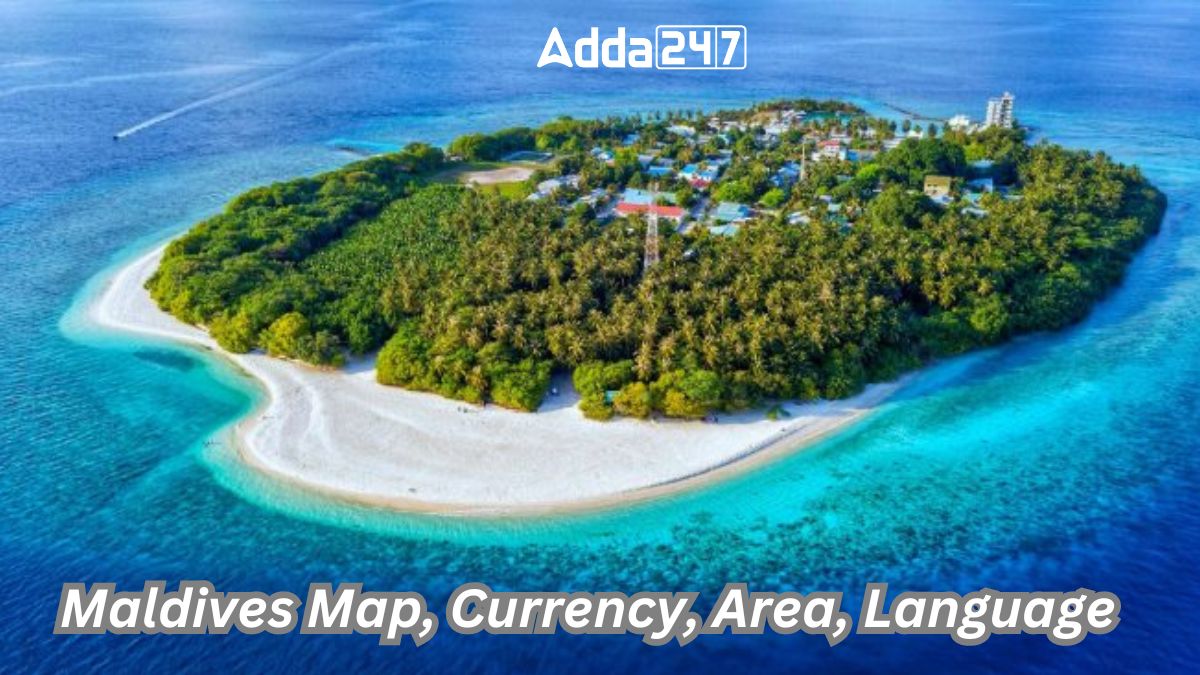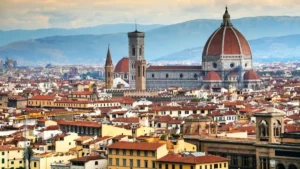The Maldives, located in the Laccadive Sea, is a stunning group of 26 atolls with more than 1,000 coral islands. Famous for its soft white-sand beaches, clear blue waters, and colorful marine life, it is one of the most beautiful places in South Asia. The Maldives attracts visitors from around the world who come for luxury resorts, peaceful surroundings, and exciting water adventures like snorkeling and diving.
Maldives Island at a Glance
Area: 298 km2
Capital: Malé
Country Code: 960
Country Population: 554,339
Currency: Maldivian rufiyaa (MVR), 1 USD = 12.85 MVR
Departure Tax: US$10.00
Flag: Maldives Flag
Official Language(s): Maldivian (Divehi) and English is widely spoken
Religion: Islam
Historical Significance of Maldives
The Maldives has a rich historical tapestry that dates back to the 5th century BCE when Buddhist peoples, likely from Sri Lanka and southern India, first inhabited the archipelago. The adoption of Islam in 1153 CE is a pivotal moment in its history. The Portuguese forcibly established themselves in Male in the 16th century, and later, the islands became a sultanate under Dutch protection and then a British protectorate. The Maldives gained full political independence in 1965 and became a republic in 1968. In recent decades, the country has undergone significant political reforms and modernization efforts.
Maldives – Geographical Significance
Situated in the north-central Indian Ocean, the Maldives is a chain of approximately 1,200 small coral islands and sandbanks. The islands are organized into clusters or atolls, extending over 510 miles from north to south and 80 miles from east to west. The low-lying islands, built upon submerged ancient volcanic mountain ranges, are protected by barrier reefs from monsoons. The geographical features include sandy beaches, lagoons, coconut palms, and a diverse marine life in the surrounding seas.
Map of Maldives
Maldives is an independent island country situated in the north-central Indian Ocean. It consists of around 1,200 small coral islands and sandbanks, with approximately 200 of them inhabited. These islands are grouped in clusters known as atolls, extending over 510 miles from north to south and 80 miles from east to west. The northernmost atoll is about 370 miles south-southwest of the Indian mainland, and the central area, including the capital island of Male, is approximately 400 miles southwest of Sri Lanka.
Capital of Maldives
Malé, the vibrant capital of the Maldives, densely populated on the Indian Ocean’s islands, captivates with its mosques and colorful architecture. The Islamic Centre, including a mosque and a golden-domed library, stands out. The bustling fish market showcases the day’s catch, while a nearby produce market brims with local fruits, creating a lively maritime atmosphere.
Currency of Maldives Island
The official currency of the Maldives is the Maldivian Rufiyaa. The Maldives Monetary Authority regulates the issuance of this currency. Commonly denoted by symbols such as MVR and Rf, the Maldivian Rufiyaa is recognized by the ISO 4217 code MVR. It is divided into smaller units known as laari, with 100 laari making up one Rufiyaa.
Maldives – Language
The official language of the Maldives is Dhivehi (or Maldivian), an Indo-European language. Additionally, Arabic, Hindi, and English are spoken. This linguistic diversity reflects the historical influences of various cultures that have interacted with the Maldives, including traders from Arab countries, Malaya, Madagascar, Indonesia, and China.
Population of Maldives Island
The Maldivian population is primarily composed of the Maldivian ethnic group, shaped by the historical settlement of Tamil and Sinhalese peoples from southern India and Sri Lanka. The population is predominantly rural, with more than half residing in villages on small islands. The birth rate is higher than the world average, and more than one-fifth of the population is under 15 years of age. The majority of the population adheres to Islam, which is also the state religion.
What is the Area of Maldives?
Maldives, situated in the Indian Ocean, South Asia, is a scenic island country with a land area of 298 km² (115 sq mi). Its intimate size fosters a unique charm, making it a sought-after tropical destination.
Maldives – Education System
The education system in the Maldives includes traditional schools focused on teaching the Qur’an, Dhivehi-language schools, and English-language primary and secondary schools. While primary enrollment is high, higher secondary education faces a decline in enrollment. The Maldives National University offers limited degree programs, and many Maldivians seeking higher education degrees must go abroad.
Tourism in Maldives
Since the 1970s, the Maldives has experienced rapid economic development, with tourism playing a central role. The annual growth of the gross domestic product (GDP) has averaged about 6 percent in recent years, and the gross national income (GNI) per capita has reached the level of upper middle-income countries. The tourism sector, supported by more than 130 resort islands, contributes significantly to the country’s GDP, making up four-fifths of the services sector. The unique marine geography offers opportunities for diving, water sports, and undersea accommodations, attracting over 1.5 million tourists annually.




 Which Country is known as the Land of Si...
Which Country is known as the Land of Si...
 Which Place is known as the Florence of ...
Which Place is known as the Florence of ...
 Top-10 Most Valuable Companies of India ...
Top-10 Most Valuable Companies of India ...







